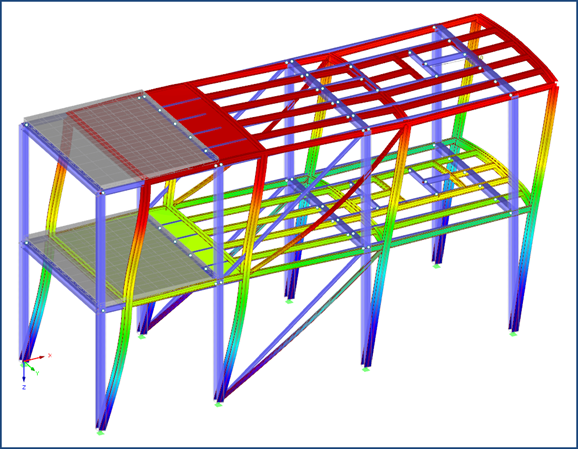
Seismic analysis and design is a critical aspect of the construction of buildings and other structures in regions prone to earthquakes. It involves the analysis and design of structures to resist the forces generated by seismic activity, with the goal of ensuring the safety and stability of the structure and the people who use it.
Earthquakes can have a devastating impact on structures and the people who use them. They can cause buildings to collapse, bridges to fail, and infrastructure to be severely damaged. In addition to the loss of life and property damage, earthquakes can also have long-term economic and social impacts, affecting the livelihoods of communities and regions.
Seismic analysis and design is important because it helps to mitigate the risks associated with seismic activity. By designing structures to resist seismic forces, engineers can ensure that buildings and other structures remain standing and functional during and after an earthquake. This can help to minimize the impact of earthquakes on people, property, and infrastructure.
Seismic analysis and design involves the use of complex analytical tools and methods to determine the seismic loads that a structure will experience and to design structural elements to withstand those loads. It requires a deep understanding of structural engineering principles and an ability to work with a wide range of materials and construction techniques.
Overall, seismic analysis and design is a critical aspect of ensuring the safety and stability of structures in earthquake-prone regions. As our understanding of seismic activity and its impact on structures continues to evolve, so too must our approach to seismic analysis and design to ensure that our structures are as resilient and safe as possible.
Seismic design of buildings is the process of designing buildings to resist seismic forces, with the goal of ensuring that they remain standing and functional during and after an earthquake. The seismic design process involves several steps, including the selection of lateral force-resisting systems, the determination of seismic loads, and the design of structural components such as beams, columns, and foundations.
1. Selection of Lateral Force-Resisting Systems The first step in seismic design is to select a lateral force-resisting system. These systems are designed to resist the lateral forces that result from seismic activity. Some common lateral force-resisting systems include moment frames, braced frames, and shear walls. The selection of the system depends on several factors, such as the building height, occupancy type, and soil conditions.
2. Determination of Seismic Loads Once the lateral force-resisting system is selected, the next step is to determine the seismic loads that the building will experience. Seismic loads are calculated based on the probability of an earthquake occurring and the intensity of the ground motion that would result. Seismic loads are typically expressed as a percentage of the building’s weight, known as the seismic coefficient.
3. Design of Structural Components After the seismic loads have been determined, the next step is to design the structural components of the building. This includes the design of beams, columns, and foundations to withstand the seismic loads. The design of these components takes into account several factors, such as the strength of the materials, the anticipated level of seismic activity, and the specific requirements of the selected lateral force-resisting system.
Factors Influencing Seismic Design Seismic design is influenced by several factors, such as building height, occupancy type, and soil conditions. Taller buildings require stronger and more robust lateral force-resisting systems, such as moment frames, to resist the greater forces generated by seismic activity. Occupancy type also influences seismic design, as buildings that house critical infrastructure or large numbers of people require more stringent design standards to ensure their safety. Soil conditions also play a role in seismic design, as buildings constructed on softer soils are more susceptible to damage from seismic activity.
Overall, seismic design of buildings is a complex and iterative process that involves several steps, from the selection of lateral force-resisting systems to the design of structural components. The goal of seismic design is to ensure that buildings are safe and functional during and after an earthquake, and that they can withstand the forces generated by seismic activity.
+91 9619587723
1003, Ara Bella (J-Type) Building, Bella Casa, Baner Sus Road, Pune, Maharashtra 411021
structures@dynamicss.co.in
Copyright © 2023 By Dynamic Structural Solutions LLP | Created & Crafted by Itorix Infotech LLP
